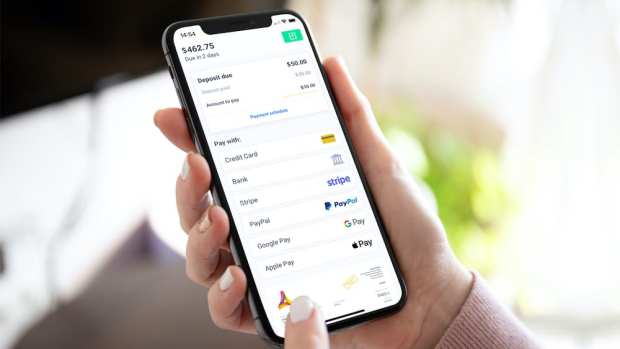The Rise Of The Multitasking SMB Finance App

The way entrepreneurs are managing their businesses — and their businesses’ finances — is changing, with complexities and pain points multiplying.
Amid the market uncertainty of the pandemic, small business owners often have to do more with less, and they’re expecting the financial technology solutions they use to do the same. Indeed, according to Fiskl CEO and Founder Alina Lapusneanu, entrepreneurs are searching for solutions that can multitask, and embrace a wide range of functionality to tackle more pain points around banking, payments and cash management — all at once.
In a recent conversation with PYMNTS, Lapusneanu discussed some of the biggest trends in financial services, including open banking, the growing use of payment gateways and the ubiquity of the mobile device, that contribute to rise of what she described as the “super app.”
“We see much more of a blending of financial services, invoicing and payments from the big players,” she said in an interview, noting that even technology giants like Uber and Facebook, which hadn’t initially entered the market as FinTechs, are stepping into this field.
In order to build out holistic services successfully, however, these apps must meet a growing list of requirements, with needs around cash management intensifying for many small and medium-sized businesses (SMBs) as a result of the pandemic.
All About Cash Flow
Before the pandemic, concern was growing over the issue of late B2B payments and the struggle among small businesses to get paid on time. That need has only grown amid market uncertainty, leaving opportunity for FinTech solutions to support seamless payments and cash management tools for SMBs.
Initiatives that emerged well before the coronavirus crisis, such as open banking, have proven to be instrumental in addressing small firms’ more pressing cash flow concerns. As Lapusneanu noted, the ability to marry the data within a FinTech platform like Fiskl with the bank data of the small business user provides a more holistic view of finances and promotes automation in transaction categorization and reconciliation to ensure small businesses are in a healthy cash flow position.
Increasingly, said Lapusneanu, growing adoption of payment gateways via tools like WhatsApp and PayPal has presented an alternative to direct bank transfers that not only allow small businesses to offer their own business clients choice in how they pay, but can support accelerated payments — though, she noted, there is a balancing act involved.
For small business clients, she said, the growing preference is to use credit cards over direct bank transfers, often due to the ability for cards to provide extra capital float for the payer. Of course, the small business receiving that transaction often prefers direct bank transfers like ACH thanks to its affordability.
One of the biggest trends she has seen is the expanding adoption of payment gateways like PayPal, WhatsApp or a slew of other portals that can provide both the buyer and seller choice in how transactions occur. As these payment gateways increase support for faster payments, opportunities to combat delayed invoice payment scenarios will grow.
Lapusneanu emphasized, however, that there is no single solution to the issue of late payments. Rather, a mix of functionality within a financial management app — which can include on-the-spot invoicing and payment acceptance, support for a range of payment methods and capabilities like automatic payment reminders or installment payments (a function on Fiskl’s platform that has seen significant traction amid the pandemic) — can all play a role.
“It’s a much more complex topic that has to be solved from multiple angles: regulation, bank-to-bank payments, speed of payments, request-to-pay, reminders,” she said. “Everything contributes to speeding up the payment flow.”
A Mobile-First Strategy
Increasingly, initiatives designed to support accelerated payments to small businesses must be mobile-first in order to fit around the lives of business owners and their workers that are often traveling or in the field for work.
Take the example of a small construction business, Lapusneanu offered. Business owners don’t give their employees laptops, and those contractors aren’t going to lug around heavy tablets or computers while on the job. Smartphone penetration is high, however, presenting a much more convenient and agile platform through which to manage payments and other workflows.
Historically, business owners have had to manually collect information about employee time-tracking and enter it into their laptops at the end of the day or week. Similarly, when business owners are reliant on their computers, they’re not able to issue an invoice until they’re back in the office at their desk. The mobile device, on the other hand, allows professionals to track time, send invoices and even receive payment on the spot.
According to Lapusneanu, the role of the mobile device is even more critical in other areas of the globe.
“Around the world, mobile-first is the trend to get applications to a wide-ranging segment of users,” she said. “Mobile penetration worldwide, particularly for SMEs, stands at about 90 percent.”
By taking advantage of that ubiquity, FinTech solutions can meet small business owners where they are, and provide them the kinds of functionality that can speed up payments, enhance cash flow visibility, and introduce an overall sense of convenience.
As functionality via the mobile device grows through open banking, payment gateway integration and other mechanisms, opportunities will continue to expand for small business owners to not only obtain sophisticated tools to manage their operations and finances, but do so through platforms that offer a one-stop shop of feature-rich functionality.
